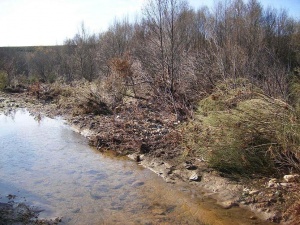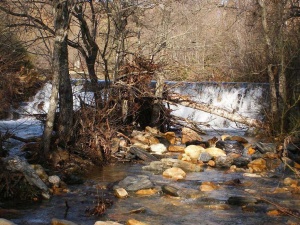Difference between revisions of "Negro"
m (→Measures selection) |
(→References) |
||
| Line 49: | Line 49: | ||
==References== | ==References== | ||
<references/> | <references/> | ||
| + | |||
| + | http://www.mma.es/secciones/acm/aguas_continent_zonas_asoc/dominio_hidraulico/conserv_restaur/pdf/Rio_Negro.pdf | ||
[[Category:Case_studies]] | [[Category:Case_studies]] | ||
Revision as of 14:36, 14 April 2010
Negro
Key features of the case study
- The ecological improvement of the Negro river is part of a national river restoration programme, Estrategia Nacional de Restauración de Ríos, developed by the Ministerio de Ministerio de Medio Ambiente, y Medio Rural y Marino (Ministry of Environment). The Confederación Hidrográfica del Duero is the organism which has implemented this project, as others of the Duero basin.
- The principal objective of this initiative is to recover trout populations and the naiad Margaritifera margaritifera, which is in serious danger of extinction.
- The main threat to these species is the presence of weirs that make difficult or impossible the migration of the trouts upstream,which are the propagation vector of the naiads, affecting their reproduction.
Site description
The Negro river drains the the area located at the south of Sierra de la Cabrera, of siliceous substrate (gneiss, slate and quartzite). The climate is meaditerranean with atlantic influence.
The actiation area is located in protected areas: SCI ES4190067 "Riberas del río Tera", SCI ES4190110 "Sierra de la Cabrera" and ZEPA ES4130024 "Sierra de la Cabrera"
The total or partial removal of riparian vegetation at some reaches has caused the loss of natural channel morphology. The transformation of the riparian forest and floodplain into flood meadows is another reason of morphological alteration.
There are various impoundments at the river for different uses(mills, forges, irrigation pipes,etc.)increasing the solids contribution and the interrupting the longitudinal connectivity.
Measures selection
The project aimed to:
- Recover aquatic populations and improve instream habitats
- Improve the composition and structure of the riparian vegetation
- Amend longitudinal connectivity of the fluvial system
- Recover aquatic populations and improve instream habitats
The measures can be summarized as follows:
- Silvicultural treatments, plantations and sowing for improve the riparian vegetation
- Buffer strips for reduce sediment input
- Fish pass for amend the longitudinal connectivity and facilitate upstream migration, enabling the recovery of the target species
- Intallation of spawing structures for improve the instream habitats and recover the fish populations.
- The channel morphology was rehabilitated with eath movements, and sediments removal from the riverbed. Also, some waste was removed from the channel.
- Silvicultural treatments, plantations and sowing for improve the riparian vegetation
Success criteria
Ecological response
Hydromorphological response
Monitoring before and after implementation of the project
Socio-economic aspects
Contact person within the organization
Extra background information
References
Related Measures
- No measures have been assigned to this project.
Related Pressures
- No related pressures were found.

